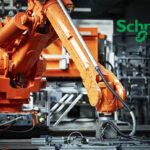ASIA ELECTRONICS INDUSTRYYOUR WINDOW TO SMART MANUFACTURING
Schneider Electric Brings Software-defined Automation with Intel, Red Hat
Schneider Electric in collaboration with the technology companies Intel and Red Hat, has released a Distributed Control Node (DCN) software framework. Specifically, this framework is an extension of Schneider Electric’s EcoStruxure™ Automation Expert that enables industrial companies to move to a software-defined, plug-and-produce solution. Thus, it allows them to enhance their operations, ensure quality, reduce complexity, and optimize costs.

Next Generation of Industrial Control
The framework was aligned with the goals of the Open Process Automation Forum (OPAF). Mainly, it is is dedicated to driving interoperability and portability. The three collaborators worked to create a modern, network-based experience, leading the way to the next generation of industrial control.
“This project is the culmination of two years of co-innovation to create efficient, future-proof distributed control systems,” said Nathalie Marcotte, Senior Vice President of Process Automation at Schneider Electric. “The DCN framework is key to fostering an open automation approach. This enables industrial businesses to grow and innovate for the future. Its interoperability and portability help our customers enjoy the freedom of shaping technology around their business needs – and not the other way around.”
Red Hat, in collaboration with Intel, recently announced the creation of a new industrial edge platform. Specifically, it helps provide a modern approach to building and operating industrial controls. Since implementing this platform, Schneider Electric has now deployed Red Hat Device Edge in the new DCN software. This is in addition to Red Hat Ansible Automation Platform and Red Hat OpenShift at the compute layer for DCN deployments. Also, it is combined with a control infrastructure from Schneider Electric and reference architecture from Intel.
Moreover, the framework consists of two main components: an advanced computer platform (ACP) and the DCN. The ACP supervises the control workload. It provides the content control and automation capabilities needed to deploy workloads securely and programmatically. This is in addition with virtualization and monitoring functionalities. Meanwhile, the DCN are low-power, industrial systems using Intel Atom x6400E series processors. Also, they run controls and suit workloads of mixed-criticality.
“Open and interconnected commercial solutions will help usher in the transition from fixed function proprietary devices to flexible and dynamic software-based infrastructures,” said Christine Boles, Vice President of Intel’s Network and Edge Group and General Manager for Federal and Industrial Solutions.
“Intel has a long history of driving open system approaches across its ecosystem. This collaboration with Schneider Electric and Red Hat aims to develop a software-defined control system. Specifically, it showcases next-generation DCNs built on general-purpose compute and operating systems. Consequently, it brings about this transition to the industrial sector.”
“Red Hat is committed to helping manufacturers implement autonomous operations on the shop floor,” said Francis Chow, Vice President and General Manager of In-Vehicle Operating System and Edge at Red Hat. “We will be working closely with our partners like Schneider Electric and Intel. Thus, we can help build scalable, software-defined factories and operations capable of advanced automation and interoperability by utilizing a consistent platform approach. We’re excited about this collaboration, and this is only the beginning. By taking these steps now, we can help set the industrial sector up to explore all the possibilities AI, edge computing and more have to offer.”




